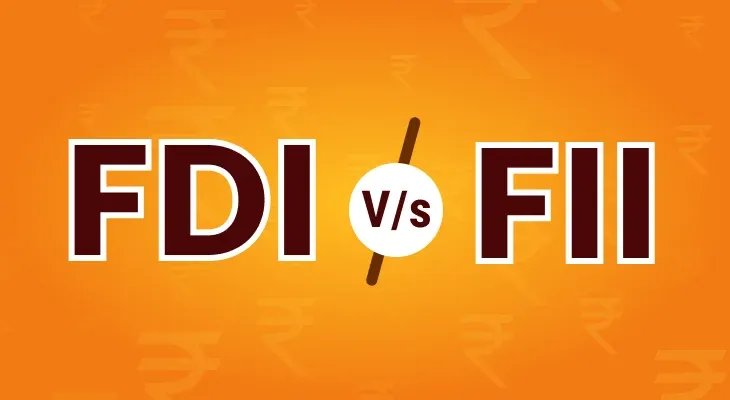
What is Time Decay in Options Trading?
Investors who deal with options trading may know that time is a crucial variable that can importantly affect the value of any options contract, therefore, its potential to make profits. In options trading, a single most significant concept to be familiar with is that of “time decay”. This refers to gradual erosion of the value of an options contract as it approaches the date of expiry. This concept is an inherent phenomenon of the time-sensitive characteristic of the options contract and can critically impact decision-making and trading techniques. It’s worth your while to read this article to know what time decay is and how it aids traders to strike when the iron is hot to make profits in options trading.
What is time decay?
In the aspect of time decay forms a critical part of these kinds of trading contracts. In trading circles, time decay is also referred to as theta decay. Additionally, it is also called theoretical erosion and reflects the diminishing rate of an options contract’s premium (what investors pay for the options contract). Time decay in options trading is in the nature of all options contracts, irrespective of the price movements of underlying assets in contracts.
Simply put, an options contract is an agreement to buy or sell an underlying asset (as specified in the contract) that grants the contract holder the right but not the obligation to buy (call option) or sell (put option) the contract (underlying asset) at a particular date (date of expiry) and at a predefined price (strike price). As the date of expiry comes closer, the value of the right granted by the contract decreases, reducing the option’s premium. This diminishing value occurs due to the low probability of the options trading contract ending in the money (being profitable) with the passing of time.
As a result, the component of time value of an option’s premium, reflecting the potential for future price shifts, gradually tends to decay.
How Time Decay Works
The concept of option time value decay can be understood better by the factors mentioned below:
- Time till Expiry Date: As the expiry date of an options contract approaches, the rate of time decay becomes rapid. Some options have long expiry dates. These have slow decay rates compared with contracts with short periods to expiry dates.
- Volatility: Options contracts with underlying assets that reflect high price volatility are prone to decay slowly relative to low-volatility underlying assets. In options trading, high volatility implies a greater likelihood of the options contract turning profitable before the expiry date. Hence, there is a slower time decay rate.
- Intrinsic Value: In the money options, of which the intrinsic value (difference between strike price and underlying asset’s price) is on the positive side, are less prone to time decay than out of the money options that do not have any intrinsic value.
- Rates of Interest: Interest rates that are high can speed up time decay, especially for out of the money call options. The reason for this is that the time value of money rises with interest rates that are higher. This makes it less appealing to hold any options contract that may not prove profitable.
How does time decay affect options pricing?
As you have read by now, the role of time decay is crucial in deciding an options contract’s premium or right value. As time goes by, the component of time value in the option’s premium decreases slowly. This results in an overall premium that is lower. This effect is seen most for options trading contracts that are at the money, in which the strike price is near the current price of the underlying asset. As intrinsic value doesn’t exist in these options, their premium mainly constitutes time value, decaying quickly as the date of expiry approaches.
For out of the money options, the strike price is not favourable relative to the current price of the underlying asset. These options contracts are also affected by the decay of time. As the date of expiry comes close, the probability of these options turning profitable decreases, resulting in a quicker time decay rate.
Time Decay Benefits
Time decay in options appears as a disadvantage, but it presents significant opportunities for options writers and sellers. Some of the potential advantages of time decay are highlighted below:
- Slow Early Time Decay: In an option contract’s initial stage, the progress of time decay is slow, adding premium or value to the contract. This permits traders to sell the contract while it still has substantial value.
- Option Profitability Determination: The effect of time decay on the premium of an option can aid investors to decide whether the options trading contract is worth going ahead with. Options that have a high rate of time decay may not seem appealing for holding in the long term.
- Preferable for Options Sellers: The effect of time decay is beneficial for writers and sellers of options. As the options’ value slowly declines, the buyer is less prone to execute it. In the event the option expires without any worth, the seller gets the full premium.
Example of Time Decay
The concept of time decay in options trading can be illustrated with the example below:
Let us assume that an investor is thinking of buying a call option on an asset, a stock, having a strike price of ₹200 with a premium of ₹10 per options contract. The option has a 2-month expiry date from the date of purchase. The investor/trader expects that the stock will trade at ₹220 or more by the expiry.
However, another call option having the identical strike price of ₹200 but just one week until expiry has a premium of ₹2 per options contract. This options contract costs substantially less than the 2-month contract as the chance of the stock going higher by a significant amount in only a week is comparatively low. How has this stock option time decay example illustrated time decay?
In this illustration, the one-week option's time (extrinsic) value is lower than the 2-month option, because the time value factor decays quickly as the date of expiry gets closer.
Difference Between Time Decay and Moneyness
Difference Parameter | Time Decay | Moneyness |
Definition | Time decay is the decrease in the value of an option, closer to the expiry date. | Moneyness refers to an option’s profitability level according to intrinsic value. |
Relevance | Time decay affects the option’s premium, particularly the component of time value. | Moneyness decides whether an option can yield profit or not. |
Categories | No categories | In the money At the money Out of the money |
Impact on Options | Most seen in at the money options, and quickens for out of the money options. | Time decay influences the money options to a lesser extent due to intrinsic value. |
Profitability | Does not directly correlate with an option’s profitability. | Directly correlates with an option’s profitability. |
Conclusion
The concept of time decay cannot be ignored if you are undertaking options trading. Traders must account for time decay and use the concept to make informed decisions that may potentially result in profit from their trading activity. As time decay refers to the gradual decline in the value of an options contract, closer to the expiry date, time decay impacts options differently according to contracts’ volatility, moneyness, and period to expiry. The aspect of time decay may not be as beneficial to purchasers of options, but it does prove advantageous to sellers and writers of options contracts.
FAQ
Does time decay affect buyers and sellers of options contracts equally?
Time decay has an impact on buyers and sellers of options contracts, but in contrary ways. For buyers of options contracts, time decay leads to the erosion of value in their positions as time passes as the value of the premium declines. On the other hand, option writers and sellers benefit from time decay as the value of the option sold declines, making it less probable for buyers to execute the contract.
Why is time decay more relevant in options contracts compared to other financial instruments?
Time decay is more relevant in options contracts compared to other financial instruments as options contracts have a definite expiry date. For example, stocks may be held indefinitely, but options contracts must be executed by a certain date or withdrawn from.
How does the time till expiry impact the magnitude of time decay?
The time left till an option contract expires is important to determine the magnitude of time decay. Options having long expiry periods have a slow rate of time decay than those with shorter periods to expiry.


